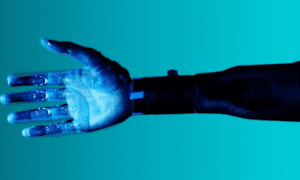A mobile wallet is a way of carrying digital card information in a digital form on a mobile device. To make purchases, people can pay with their tablet, smartwatch, or smartphone. Normally, a mobile wallet is a payment service through which individuals and businesses can send and receive money through mobile device. It is a type of e-commerce mode that is intended to be used with mobile devices owing to their easy access and convenience. It is also known as a mobile money transfer or mobile money.
Primarily, a mobile wallet allows an individual to receive payments as well as pay using a mobile device. Usually, a mobile wallet is provided through some payment processing models. This includes:
- Mobile-based billing– An individual generally receive/sends payment through their mobile service provider.
- SMS-based transactions– This involves initiating transactions by sending an SMS short code. The payment can be debited/credited from the configured bank account, mobile service or credit card.
- Mobile web payments– enable users to receive/send payments through a mobile app.
- Near-field communications (NFC) – In this case, a special hardware in the mobile device and a mobile app relate with a payment-processing terminal.
Less than three decades ago, the idea of sending or receiving money using a mobile device seemed odd. Today, the use of a mobile device for money transfer is not only accepted but turning out to be the norm in our society. Some very successful mobile wallets include Globe GCASH, SMART Money in the Philippines and M-PESA in Kenya.
Back in 1997, Coca Cola introduced a few vending machines in Helsinki that allowed consumers to buy their drink through text message. Although small, this innovative use case is still regarded as the first example of mobile wallet and introduced the idea of using mobile devices for transactions. As time went on, mobile devices were used to buy movie tickets, arrange travel, and even order pizza. By 2003, about 95 million cell phone users had made a purchase using their mobile device.
The major player in mobile wallets is Google and Apple. Google wallet was launched in 2011, making it the first major company to provide a mobile wallet to market. With the wallet, shoppers could make payments, earn loyalty points and redeem coupons, using a technology known as ‘near field communications’. Unfortunately, Google Wallet had limitations. It was only used on one phone model and was accepted at a few merchants. Notwithstanding, it was revolutionary.
In 2012, Apple introduced the Apple’s Passbook, an app that targeted boarding passes, tickets, and coupons instead of actual mobile payments. Two years later, during the launch of iPhone 6, Apple Pay was announced. Although Apple pay service was only available in the US, it is now available in the UK and China.
Since last year, we are witnessing changes in mobile wallet field. For example, near field communications (NFC) is now available on almost all high-end smartphones. The technology has been supported by the Android for several years, and Apple got in the game after the launch of iPhone 6.Over time, many stores have started to accept mobile payments via NFC terminals, leading to more companies updating or releasing their mobile wallet versions. In future, we expect paying by phone to replace cash.
See this article on how “Digital wallet is set to exceed debit & credit card payments – How FinTech is disrupting the banking industry” .



















































